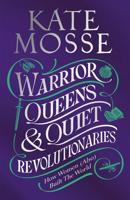Publisher's Synopsis
This historic book may have numerous typos and missing text. Purchasers can usually download a free scanned copy of the original book (without typos) from the publisher. Not indexed. Not illustrated. 1901 edition. Excerpt: ... CHAPTER V. Metallic Compounds. Alkalis. The compounds of the alkali metals, potassium and sodium, . play a considerable part in colour making. Formerly the potassium compounds were in general use, but the sodium compounds are at present obtainable at a much lower price, and in most cases they can be used equally well. Thus, in colour making, sodium compounds are chiefly employed. The cyanogen compounds are an exception; their potassium compounds are used exclusively. Potassium Compounds.--The potassium compounds which are chiefly used in colour making are potassium carbonate (potashes, pearl-ash), potassium hydroxide (caustic potash), potassium nitrate (saltpetre), potassium tartrate (tartar), and potassium ferrocyanide and ferricyanide (yellow and red prussiate of potash). The cyanogen compounds have peculiar properties. We shall describe them separately after the potassium and sodium compounds. Potassium Carbonate (carbonate of potash), K., CO3 = 138, is known commercially as potashes, a name derived from its former method of preparation by heating the ashes of plants in pots. At present potashes are prepared in large quantities from other sources. Pure potash forms crumbling lumps with a slight yellow or bluish grey tinge, rapidly absorbing moisture from the air, and in time completely liquefying. The yellowish tinge is caused by oxide of iron, the bluish by manganese compounds. The so-called calcined potash has been strongly heated, and thus all organic substances contained in it have been destroyed. Potashes are in no way pure potassium carbonate; they contain a mixture of all those salts which are found in plants--potassium sulphate and chloride, small quantities of silicic acid, etc. These impurities are rarely harmful, still it is.






